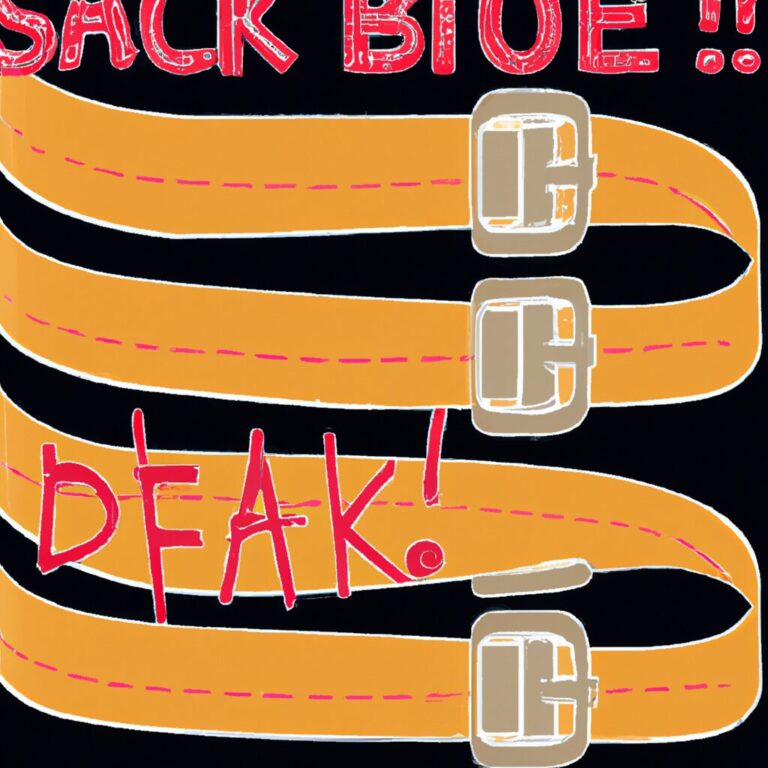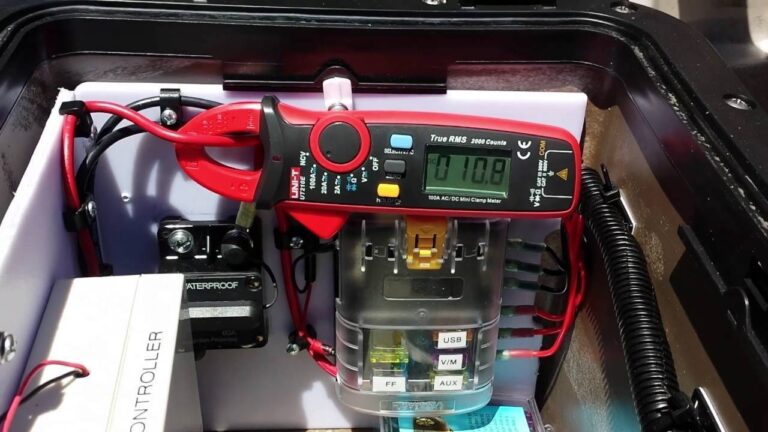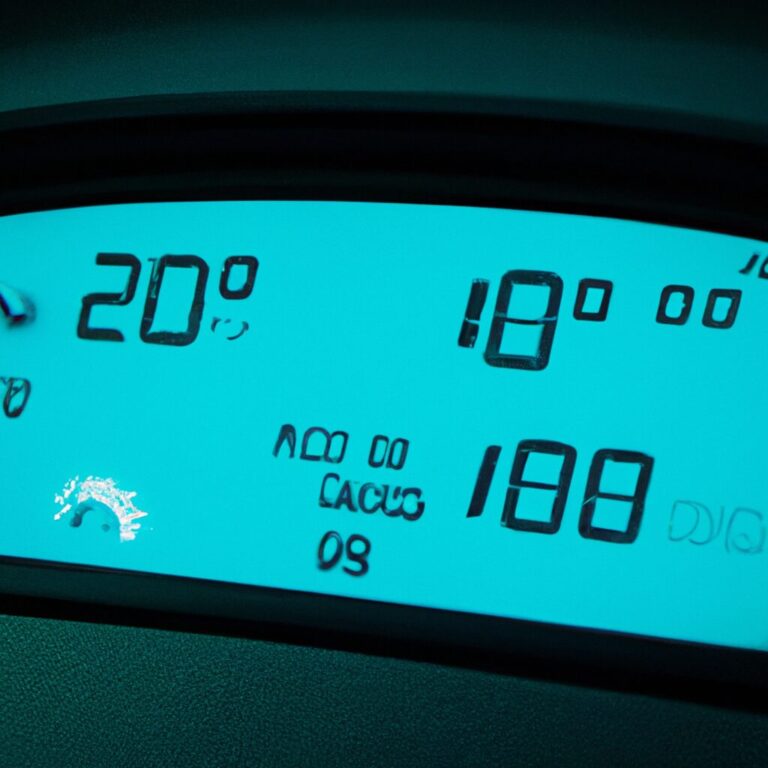How to Read Tire Pressure Gauge at Gas Station
To read a tire pressure gauge at a gas station, simply locate the gauge on the air pump, remove the cap from the tire valve, press the gauge onto the valve firmly, and read the numbers on the gauge display. Checking tire pressure regularly is essential for maintaining proper tire inflation, which ensures optimal vehicle performance and safety on the road.
Properly inflated tires improve fuel efficiency, extend tire life, and enhance handling and braking capabilities. Most gas stations provide air pumps with built-in pressure gauges, making it convenient to check and adjust tire pressure when refueling. This article will guide you on how to read a tire pressure gauge at a gas station and explain the importance of maintaining proper tire pressure for your vehicle.
Choosing The Right Tire Pressure Gauge
Ensure proper tire maintenance by selecting the right tire pressure gauge. Make sure to read the tire pressure gauge at the gas station accurately to maintain optimal tire pressure for safety and performance. Regularly monitoring tire pressure can extend tire life and improve fuel efficiency.
Consider The Type
When choosing a tire pressure gauge, consider the type that will best suit your needs. There are three main types of gauges: dial gauges, digital gauges, and stick (pencil) gauges.
- Dial gauges are reliable and accurate, but may require calibration.
- Digital gauges are easy to read and precise, but they require batteries.
- Stick gauges are simple and compact, but may be less accurate.
Verify Accuracy
Checking the accuracy of your tire pressure gauge is crucial for proper inflation. To ensure accuracy, compare your gauge to a certified gauge or one at the gas station. If a discrepancy is found, consider calibration or replacement.

Credit: m.youtube.com
Locating The Recommended Tire Pressure
To find the recommended tire pressure, check your tire pressure using a gauge at the gas station. Match the reading with the manufacturer’s suggested PSI located on your vehicle’s door jamb. Adjust accordingly for optimal safety and performance.
Consult The Vehicle Manual
When it comes to locating the recommended tire pressure for your vehicle, one of the most reliable sources of information is the vehicle manual. The manual contains detailed specifications for a wide range of vehicle components, including the tire pressure.
To find the recommended tire pressure in the vehicle manual, follow these simple steps:
- Retrieve the vehicle manual from the glove compartment or any designated storage area.
- Locate the section that provides information on tire maintenance and specifications.
- Look for the recommended tire pressure values, usually expressed in PSI (pounds per square inch), for the front and rear tires.
It’s important to note that different vehicle models may have different recommended tire pressure values. Therefore, always refer to the specific manual for your vehicle to ensure accurate information.
Check The Doorjamb Or Fuel Door
If you don’t have access to the vehicle manual or you find it difficult to locate, don’t worry! There are other places where you can easily find the recommended tire pressure.
The first place to check is the doorjamb on the driver’s side. Many vehicle manufacturers imprint a sticker on the doorjamb that contains important information, including the recommended tire pressure.
Follow these steps to find the recommended tire pressure on the doorjamb:
- Open the driver’s door and stand next to it.
- Direct your attention to the side of the doorjamb, where the door latches onto the vehicle body.
- Look for a sticker or label that displays various details about your vehicle.
- Locate the tire pressure section on the sticker, which typically provides the recommended tire pressure for both the front and rear tires.
If you can’t find the recommended tire pressure on the doorjamb, another possible location is the fuel door. Some vehicle manufacturers print the tire pressure information inside the fuel door, offering a convenient alternative to the doorjamb sticker.
To locate the recommended tire pressure inside the fuel door, follow these steps:
- Open the fuel door, typically located on the side of the vehicle.
- Inspect the inner surface of the fuel door for any imprinted details or labels.
- Look for the section that specifically mentions tire pressure and check the values provided.
By consulting the vehicle manual, checking the doorjamb, or inspecting the fuel door, you can easily locate the recommended tire pressure for your vehicle. This information is crucial for maintaining optimal tire performance, fuel efficiency, and overall safety.
Using The Gas Station Air Pump
When it comes to maintaining proper tire pressure, using a gas station air pump is a convenient option. These air pumps are usually located near the gas station’s fuel dispensers or in a designated area. By following a few simple steps, you can easily read your tire pressure gauge at the gas station and ensure your tires are properly inflated.
Remove The Valve Stem Cap
To start, you’ll need to remove the valve stem cap from each tire. The valve stem cap protects the valve core from dirt and debris. It’s important to remove the cap before attaching the tire pressure gauge as it allows easy access to the valve. Simply unscrew the cap counterclockwise and place it somewhere safe where it won’t get lost.
Attach The Gauge And Add Air
Once the valve stem cap is removed, it’s time to attach the tire pressure gauge to the valve stem. Ensure a secure connection between the gauge and the stem by firmly pressing the gauge onto the valve. Some gauges may have a lever or a button to engage the air pressure measurement, while others automatically display the reading. Consult the gauge’s instructions if needed.
With the gauge properly attached, it’s time to add air to the tire. Locate the air hose attached to the gas station air pump and position it near the valve stem. Press the hose onto the stem to create a tight seal. You may need to hold the hose in place while you add air.
Refer to the recommended tire pressure for your vehicle, which is usually found either in the owner’s manual or on a sticker near the driver’s side door. Aim to reach the recommended pressure by adding air in short bursts, frequently checking the gauge reading to prevent overinflating.
Release Air If Necessary
If you unintentionally overinflate the tire, you can release air by pressing the small pin in the center of the valve stem. This pin is called the valve core. Simply press it down with a small tool or the top of the valve stem cap to release air until the desired pressure is reached.
By following these simple steps, you can confidently read your tire pressure gauge at the gas station and ensure your tires are properly inflated. Maintaining the correct tire pressure not only helps improve fuel efficiency but also enhances safety and prolongs tire lifespan.
Reading The Tire Pressure Gauge
Learn how to correctly read a tire pressure gauge at a gas station with these simple steps. By understanding the measurements displayed, you can ensure that your tires are properly inflated for optimal performance and safety.
Understanding Psi Measurement
PSI, or pounds per square inch, is the unit used to measure tire pressure.
Proper tire inflation is crucial for fuel efficiency and tire longevity.
Checking For Proper Inflation
Proper tire pressure is typically listed in the owner’s manual or on a sticker inside the driver’s door.
- Under-inflated tires wear unevenly and can reduce grip on the road.
- Over-inflated tires can lead to poorer traction and a rougher ride.
When checking tire pressure, first remove the valve cap and firmly press the gauge onto the valve stem.
- Ensure the gauge is straight and not angled to get an accurate reading.
- Look at the number displayed on the gauge for the pressure reading in PSI.
| Reading | Tire Condition |
|---|---|
| Below Recommended PSI | Under-inflated, Add Air |
| Within Recommended PSI Range | Properly Inflated |
| Above Recommended PSI | Over-inflated, Release Air |
Maintaining Proper Tire Pressure
Maintaining proper tire pressure is crucial for ensuring optimal performance and safety on the road. Knowing how to read the tire pressure gauge at a gas station allows you to quickly and accurately check your tire pressure, helping you avoid potential issues and extend the lifespan of your tires.
Maintaining Proper Tire Pressure Regular Monitoring Proper tire pressure is vital for safe driving and ensuring the longevity of your tires. Regularly monitoring your tire pressure is crucial to maintain safety and performance on the road. When using a gas station tire pressure gauge, follow these steps to check and maintain proper tire pressure: 1. Park Your Vehicle: Pull up to the gas station air pump and park your vehicle close enough to reach all four tires with the air hose. 2. Prepare the Gauge: Remove the valve stem caps from each tire and keep them in a safe place. Retrieve the tire pressure gauge and take off the plastic or rubber case cover if applicable. 3. Check Tire Pressure: Press the air gauge firmly onto the valve stem to get a reading. Ensure the gauge is properly sealed to prevent air from escaping during the reading. Effects of Under or Over Inflated Tires Maintaining the proper tire pressure is crucial for vehicle safety and performance. Here’s what happens if your tires are under or overinflated: 1. Underinflated Tires: Results in poor fuel efficiency, increased tire wear, and reduced handling and braking capabilities. 2. Overinflated Tires: Can lead to a harsh ride, reduced traction, and uneven tire wear. Additionally, overinflated tires are more prone to punctures and blowouts. Regularly monitoring your tire pressure and ensuring it’s within the recommended range will help in maintaining the lifespan and performance of your tires while keeping you safe on the road.
Credit: www.wikihow.com

Credit: m.youtube.com
Frequently Asked Questions Of How To Read Tire Pressure Gauge At Gas Station
How Do You Read A Gas Station Tire Pressure Gauge?
To read a gas station tire pressure gauge, remove the cap, press the gauge onto the valve stem firmly, and read the measurement displayed.
Can I Check Tire Pressure In Gas Station?
Yes, you can check tire pressure at most gas stations. They usually have air pumps with pressure gauges for this purpose.
How Do You Use A Tire Pressure Machine At A Gas Station?
To use a tire pressure machine at a gas station, park by the air pump. Remove valve cap and check recommended PSI. Insert coins or use credit card to activate the machine and set the desired pressure. Attach the air hose to the valve stem and fill the tire to the recommended PSI.
How Do You Read A Tire Pressure Monitor?
To read a tire pressure monitor, simply locate the display on your dashboard or gauge in your vehicle. It will show real-time tire pressure levels for each tire. Check the readings regularly for proper inflation and maintenance.
Conclusion
Having the knowledge to read your tire pressure gauge at the gas station is crucial. It ensures your safety on the road and maintains optimal performance for your vehicle. By following the simple steps outlined in this blog post, you can easily and confidently check your tire pressure whenever needed.
Stay safe and drive with peace of mind!



